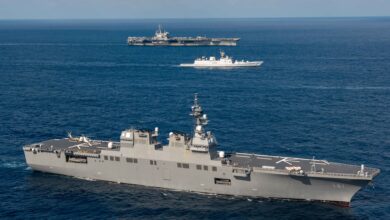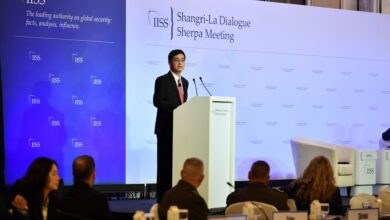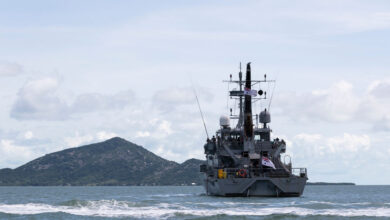Philippines, Japan join forces to redevelop former naval base

Top Stories | Feb 18, 2020:
Subic Bay in Zambales, Philippines, once home to the most significant U.S. naval base outside the continental United States, will soon be redeveloped to house Philippine submarines and commercial projects with the support of the Japanese government.
Philippine Finance Secretary Carlos Dominguez and Japanese Minister for Foreign Affairs Toshimitsu Motegi announced the plans after a meeting in Manila in early January 2020. The Japan International Cooperation Agency proposal “can only assist in the economic development plan of the area, including the defunct Hanjin [shipbuilding] yards,” Armando Heredia, an analyst focused on Indo-Pacific security affairs told FORUM. “The Philippine government would need to fund any defense-specific uses. So far, the only public announcement was to develop the yards for the submarine program.”
The Philippine Navy is planning a submarine base inside the 300-hectare Hanjin Heavy Industries and Construction shipyard in Subic Bay, pictured. The Navy will use part of Hanjin’s site to accommodate its submarines once a deal has been signed, explained Vice Adm. Robert Empedrad, the Philippine Navy flag-officer-in-command, according to Manila’s state-run PNA newswire. The Navy will build “finger piers” to dock its submarines because the water depth there is sufficient to hold them, Empedrad said.
The Philippine military is hoping to acquire two diesel electric submarines, PNA reported. The French Scorpene class of submarines is believed to be the most likely candidate for the contract.
The Philippine government continues to consider additional defense uses for the site. In May 2019, President Rodrigo Duterte ordered his Department of National Defense and the Philippine Navy to study military purposes for the facility, Japan’s Nikkei Asian Review website reported. The first Filipino warship arrived in July 2019.
The redevelopment of Subic Bay supports Tokyo’s policy for the region, according to J. Berkshire Miller, senior fellow at the Japan Institute of International Affairs. “Japan’s plans for Subic align with its free and open Indo-Pacific vision and match with its desire to enhance littoral states’ maritime domain awareness and capabilities,” Miller said.
The joint Japanese-Philippine plan was widely seen as a reaction to interest from Chinese investors in the shipyard. Despite an ongoing maritime dispute between the Philippines and the People’s Republic of China over territory in the South China Sea, Chinese investors have been making inroads on the islands. This footprint includes the Chinese-financed U.S. $987 million, 71-kilometer freight rail connecting Clark Freeport to Subic Bay. The strategic location of the Subic Bay facility, however, has factored into Manila’s desire to keep its ownership out of Chinese hands, Miller indicated.
The U.S. Navy announced in June 2019 that it was “exploring the viability of a shipyard in Subic Bay for use as a potential repair and maintenance facility,” Stars and Stripes newspaper reported. Japan’s intentions for Subic Bay focus on commercial development.
Subic Bay was first developed as a Spanish naval post before the Philippine-American War and was used extensively by the U.S. Navy in several conflicts, including the Vietnam War, prior to the Philippines taking back control of the site in 1992. The former U.S. Navy base was once home to thousands of U.S. Sailors and their families. The site is still occasionally used as a port of call by U.S. warships and a staging area for U.S. Marine Corps exercises.
Joseph Hammond is a FORUM contributor who reports from the Indo-Pacific region.




